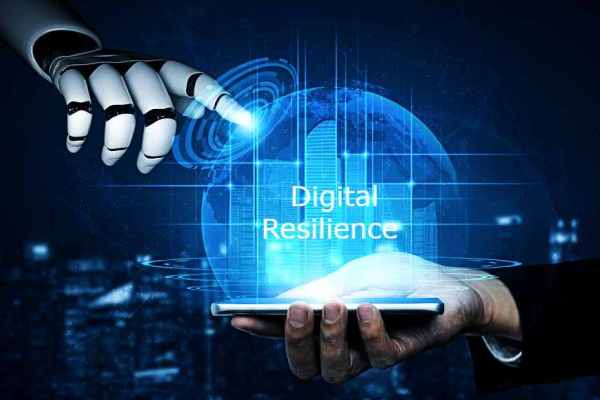Digital Resilience is the design and implementation of business processes, a digital eco-system against cyberattacks, to ensure businesses function seamlessly.
The term is more relevant, more so in the present, where the COVID-19 crisis has changed the priorities across the board. Covid-19 exposed the limitations of several businesses – process, structure, and also the business model.
Companies are adopting to remote working, whereas consumers are shifting their purchases to online platforms. The future of work and life is going to be more digital than ever imagined.
The seismic change brought in by the pandemic is likely to have a permanent change in the data privacy, protection, and security guidelines for businesses. Adopting and managing digital transformation, with security solutions to prevent data breaches, data loss, or theft is key.
Data is the most valuable asset of an increasingly digital world. Protecting the same should, therefore, be high on a company’s agenda. Businesses big or small must prepare themselves to spring forward in the new reality. With most employees working from home, the organisations have increased their spend on supporting remote working conditions.
However, does this increase cybersecurity issues or risks? The short answer is “yes.” The long answer is “yes, there are a lot.” As a part of the business strategy, organisations need to invest in digital resilience to help manage digital risks and facilitate data protection and recovery from cyberattacks. Why wait for a breach? when you can implement correctly today.
The CIO’s role in digital transformation is now more important than ever from a company standpoint and also from the market and consumer perspective. Managing the company’s cyber risk and building upon digital resilience is essential to future-proof any business.
Consider the following three points when building a digital resilience strategy for your enterprise:
Assess your current digital resilience: Covid19 has forced companies to build resilience in three phases: Respond – Recover – Reimagine. Assess and analyze critical elements of the business – technology, people, and processes to understand the current state of resilience and the impact of the future crisis, and consequent challenges.
Understand the nature and volume of the data, to design security accordingly. Reduce the exposure of sensitive data and valuable intellectual property, the loss of which may compromise reputation, brand, and innovation. Draw the desired data security framework with the experts and map the technology landscape.
Test and plan responses for potential cyberattacks: With digital threats becoming increasingly advanced, be ready with a strategy that will help you respond to the attacks and yet let you keep doing the business. Plan an appropriate response with possible security breaches.
Embed digital resilience in the organisational culture: Companies must coach employees, knowledge sharing at every level, will improve security. Employees need to stay vigilant on data acquired, processed, shared, and more. Stay ahead of the malicious elements by setting up proactive cybersecurity and data security measures.
Facilitate protection of sensitive and confidential information by integrating data security measures like Data Loss Prevention (DLP) solutions, multi-factor authentication, intrusion detection, and more in day-to-day business operations.
Such tools as a DLP solution minimizes the risk of cyberattacks carried out by insiders. By deploying it, enterprises can ensure the security of their sensitive data and reach compliance with regulations like GDPR, PCI DSS, The Personal Data Protection Bill, etc.
Another useful feature of DLP solutions is the ability to not only control but monitor sensitive or confidential data and log its movements. Companies are notified when employees attempt to copy or transfer sensitive data, keeping a close look at important information and immediately detect any increases in data transfers whether via the internet or through portable devices.
Effective digital resilience strategy should help resolve technical interruptions, stop data theft and loss, and facilitate recovery from the unlikeliest of attacks. Digital resilience is not an added cost but an investment, to avoid future burdened costs. It’s not about building a wall of defense but rather an army of defense against any online threats!
(This article is written by Filip Cotfas, Head – India Business, CoSoSys. The views expressed in this article are of the author).

